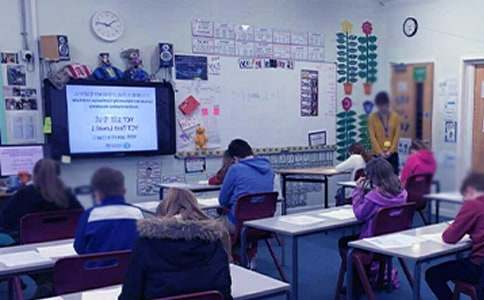- 相关推荐
2023公共英语一级考试语法解析
距离2023公共英语一级考试还有三个月的时间,为了大家更好地掌握好公共英语一级考试语法,小编为大家解析公共英语一级语法,供大家参考。

【冠词】
1.不定冠词a,an
表示one或every。如:You have a mouth。
表示某一类人、事或物,相当于any。如:A spade is a tool。
用于某些固定词组中。如:a bit,a lot of。
泛指某人或某物。如:A boy is waiting for her。
用在rather,many,what等词之后。如:You are rather a fool。
注意:名词以元音音素开头时,前面若加不定冠词,要用“an”。
2.定冠词the
表示上文已提到过或下文将要提到的人或事物。如:I am very interested in the book。
表示独一无二的人或事物。如:the world,the sun,the moon,the earth。
用在序数词、形容词最高级及对两人或物进行比较时起特定作用的比较级前。如:the young,the second story,the largest room。
用在以-ese,-ch,-sh等结尾和表示国家、党派等专有名词前,以及在江、河、湖、海、山川、群岛的名词前。如:the Communist Party of China,the Changjiang River,the Great Lake。
用在方位名词前以及某些表示时间的词组或习惯语中。如:in the west,on the right。
用在形容词前表示一类人。如:the young,the dead。
在姓氏复数形式前,表示全家人,或这一姓氏的夫妇俩。如:The Turners are sitting at the breakfast table。
用在单数可数名词前,表示某一类人或事物。如:The horse is a use-ful animal。
在艺术、文娱活动名称前通常用定冠词。如:go to the cinema。
3.不加冠词
(1) 一般专有名词、物质名词、抽象名词、人名、地名等名词前不加冠词。如:America,China,Shanghai Railway Station。但是当一个抽象名词或物质名词被限定时,前面加the。如:The milk in the bottle has gone bad抽象名词或物质名词前或后加上表示其特殊性质或类别的修饰词,指概念的“一种”、“一类”、“一次”等时,用不定冠词。如:After a swim,he had a rest。
(2) 可数名词前有物主代词、指示代词、不定代词、名词所有格等限制时,不加冠词。如:This book is mine。
(3) 季节、月份、日期、一日三餐前一般不加冠词。如:Summer is the warmest season of the year。如果月份等被一个限定性定语修饰,就要加冠词。如:Jack joined the Army in the spring of 2002。
(4) 表示语言学科名称、球类运动的名词前一般不用冠词。如:He is studying French in Paris。但是在the Chinese language,the English lan-guage等中要用定冠词。
(5) 在以“普通名词或形容词最高级+as”开始的让步状语从句中,前面不加冠词。如:Shortest as he is。
【数词】
表示数目多少或顺序多少的词叫数词,数词分为基数词和序数词。表示数目多少的数词叫基数词;表示顺序的数词叫序数词。
(一)、基数词
1.数字的表示 三位数数词要在百位和十位(若无十位则和个位)之间加and。1,000以上的数字,从后向前第三位数加一个“,”,第一个“,”前为thousand,第二个“,”前为million,第三个“,”前为billion。
例如:345 读作three hundred and forty-five;
2. 基数词一般是单数形式,但下列情况,常用复数:
a. 与of 短语连用,表示概数,不能与具体数目连 用,如scores of people 指许多人;
b. 在一些表示"一排"或"一组"的词组里;
如:They arrived in twos and threes. 他们三三两两的到达了。
c. 表示"几十岁";
d. 表示"年代",用 in +the +数词复数;
e. 在乘法运算的一种表示法里,如:3 x 5 = 15 Three fives is (are) fifteen.
3.分数分子在前,分母在后,分子用基数词,分母用序数词,当分子大于1小时,分母序数词要变成复数。
4.Hundreds(thousands,millions)of……用法:
a. 具体数字+hundred/thousand/million(不用复数形式),如:two hundred+名词复数
b. 没有具体数,加“s ” 加 “of” 如:hundreds/ thousands/millions+of +名词复数
(二)、序数词
序数词的缩写形式:first---1st second---2nd thirty-first---31st
序数词除了first,second,third外,其余都在基数词尾加-th构成。
(三)、 数词的用法
1)倍数表示法
a. 主语+谓语+倍数(或分数)+ as + adj. + as
I have three times as many as you. 我有你三倍那么多。
b. 主语+谓语+倍数(分数)+ the size (amount,length…) of…
The earth is 49 times the size of the moon. 地球是月球的49倍。
c. 主语+谓语+倍数(分数)+ 形容词(副词)比较级+ than…
The grain output is 8 percent higher this year than that of last year.
今年比去年粮食产量增加8%。
d. 还可以用by+倍数,表示增加多少倍
The production of grain has been increased by four times this year.
今年粮食产量增加了4倍。
2)分数表示法
构成:基数词代表分子,序数词代表分母。分子大于1时,分子的序数词用单数,分母序数词用复数:1/3 one-third ; 3/37 three and three-sevenths.
【形容词,副词】
形容词及其用法
形容词修饰名词,说明事物或人的性质或特征。通常,可将形容词分成性质形容词和叙述形容词两类,其位置不一定都放在名词前面。
1) 直接说明事物的性质或特征的形容词是性质形容词,它有级的变化,可以用程度副词修饰,在句中可作定语、表语和补语。例如:hot 热的。
2) 叙述形容词只能作表语,所以又称为表语形容词。这类形容词没有级的变化,也不可用程度副词修饰。大多数以a开头的形容词都属于这一类。例如:afraid 害怕的。
(错) He is an ill man. (对) The man is ill.
(错) She is an afraid girl. (对) The girl is afraid.
这类词还有:well,unwell,ill,faint,afraid,alike,alive,alone,asleep,awake 等。
3)形容词作定语修饰名词时,要放在名词的前边。但是如果形容词修饰以-thing为字尾的词语时,要放在这些词之后,例如:something nice
用形容词表示类别和整体
1) 某些形容词加上定冠词可以泛指一类人,与谓语动词的复数连接。如:the dead,the living,the rich,the poor,the blind,the hungry
The poor are losing hope.
2) 有关国家和民族的形容词加上定冠词指这个民族的整体,与动词的复数连用。
the British,the English,the French,the Chinese.
The English have wonderful sense of humor.
以-ly结尾的形容词
1) 大部分形容词加-ly可构成副词。但 friendly,deadly,lovely,lonely,likely,lively, ugly,brotherly,仍为形容词。
改错:(错) She sang lovely. (错) He spoke to me very friendly.
(对) Her singing was lovely. (对) He spoke to me in a very friendly way.
2)有些以-ly 结尾既为形容词,也为副词。
daily,weekly,monthly,yearly,early
The Times is a daily paper. The Times is published daily.
多个形容词修饰名词的顺序
多个形容词修饰名词时,其顺序为:
限定词--数词--描绘词--(大小,长短,形状,新旧,颜色) --出处--材料性质,类别--名词
a small round table a tall gray building
a dirty old brown shirt a famous German medical school
an expensive Japanese sports car
worth 的用法
worth,worthy,worth-while都为adj. 意为"值得"。
1. worth:be worth + n. 当名词为金钱时,表示"…… 值得……"
be worth doing sth. "……某事值得被做"
The question is not worth discussing again and again.
2. worthy:be worthy of +n. 当名词为抽象名词时表示"……值得……"
be worthy to be done "某事值得被做"
The question is not worthy to be discussed againand again.
3. worth-while:be worth-while to do sth "值得做某事"
worth while:It is worth while doing sth
It is worth while sb to do sth.
典型例题
It is not ____ to discuss the question again and again.
A.worth B.worthy C.worth-while D.worth while
答案C. 由worth的用法可知,此句只适合词组be worth-while to do sth.。
公共英语一级考试阅读提点练习
part 1
In a good cartoon, the artist can tell in a few lines as much as a writer can tell in half a dozen paragraphs. The cartoonist not only tells a story but he also tries to persuade the reader to his way of thinking. He has great influence on public opinion. In a political campaign, he plays an important part. Controversial issues in Congress or at meetings of the United Nations may keep the cartoonist well-supplied with current materials.
A clever cartoonist may cause laughter because he often uses humor in his drawings. If he is sketching a famous person, he takes a prominent feature and exaggerates it. Cartoonists, for instance, like to lengthen an already long nose and to widen an already broad grin. This exaggeration of a person’s characteristics is called caricature. The artist uses such exaggeration to put his message across.
Useful Words and Expressions:
1. cartoonist 漫画家
2. campaign 活动
3. controversial 争论的,争议的
4. sketch 素描
5. prominent 卓越的
6. exaggerate 夸张
7. lengthen 延长
8. grin 露齿笑
part 2
“House” and “home” are two words that have similar meanings.
“House” and “home” both refer to places where people live. However, there is a difference between them. “Home” is often referred to as the place that we live in with our families. Sadly, in our society, people can hardly distinguish a home from a house because they often see no difference between them. This confusion can be traced back to the indifference between family members. Therefore, we can say that love is an important factor in a home. A home is a shelter, not only for our bodies but also for our minds. Whenever we are depressed, we can go home for comfort. Everyone in the family will do his best to take care of each other and share their happiness as well as sorrow. Without love, a home is merely a house where loneliness is all that can be found. And a house can never be a home unless there is love.
Useful words and expressions:
1. refer to 提到
2. distinguish区别,辨别
3. confusion 混乱,混淆
4. trace back 追溯到
5. indifference 不关心
6. depressed 沮丧的
【公共英语一级考试语法解析】相关文章:
SAT语法考试的出题方式解析01-20
2017公共英语一级试题及答案解析01-20
全国公共英语三级常见语法解析01-22
公共英语三级常见语法解析:动词的时态03-27
托福考试语序语法解析03-04
托福语法解析12-30
日语能力测试一级考试语法03-05
解析托福考试频繁出现的语法03-04